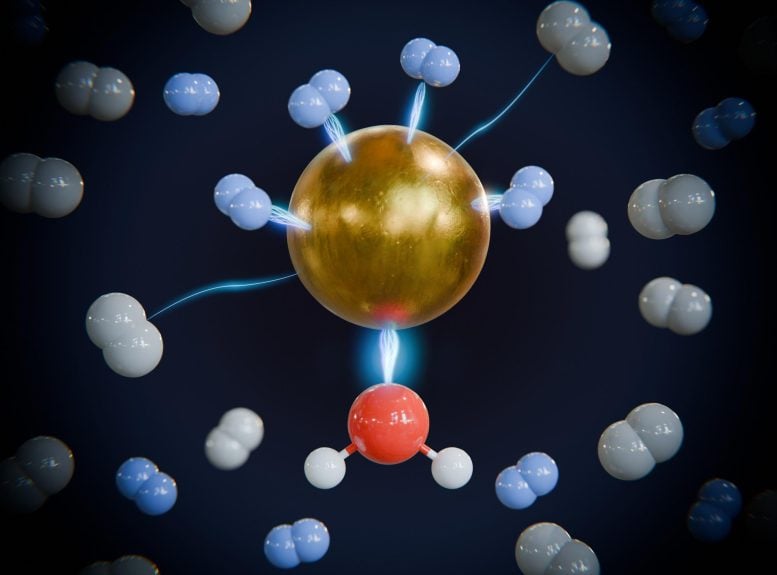
Hydrogen isotopes are vital for modern medicine and sustainable energy, but their separation has been inefficient and costly.
New research using metal-organic frameworks shows promise in improving this process at room temperature, spearheaded by a well-funded German research group training the next generation of scientists.
Protium, also known as hydrogen-1, is the most abundant hydrogen isotope. Its heavier counterpart, deuterium, is increasingly important in pharmaceuticals, enhancing drug stability and effectiveness. Together with tritium, deuterium forms a “super-heavy” hydrogen fuel for nuclear fusion, a sustainable energy source of the future. However, purifying these isotopes efficiently and affordably remains a challenge due to their similar physical properties. Current methods of isotope separation are energy-intensive and lack efficiency.
Challenges in Isotope Separation
“It has been known for almost 15 years that porous metal-organic frameworks can, in principle, be used to purify and separate hydrogen isotopes. However, this has only been possible at very low temperatures, around minus 200 degrees Celsius – conditions that are very costly to implement on an industrial scale,” says Professor Knut Asmis from the Wilhelm Ostwald Institute for Physical and Theoretical Chemistry at Leipzig University and spokesperson for the Research Training Group.
He adds that the separation mechanism is based on the strongly favored adsorption of one of the isotopes present on one of the free metal centers in the porous solid. Adsorption is a process by which atoms, ions, or molecules from a gas or liquid adhere to a solid, often porous, surface.
Advances in Hydrogen Isotope Research
The doctoral researchers of the 1,2,3H Research Training Group Elvira Dongmo, Shabnam Haque, and Florian Kreuter, who are all members of one of the research groups led by Professor Thomas Heine (TU Dresden), Professor Knut Asmis, and Professor Ralf Tonner-Zech (both Leipzig University), have now gained a deeper insight into the influence of the framework environment on binding selectivity. This means the question of why one of the isotopes is more likely to stick than the other. This was deciphered in detail in the present study through a synergistic interplay between state-of-the-art spectroscopy, quantum chemical calculations, and chemical binding analysis on a model system.
“For the first time, we have been able to show the influence of the individual atoms of the framework compounds on adsorption. We can now optimize them in a targeted manner in order to obtain materials with high selectivity at room temperature,” says Heine.
Collaborative Research and Training Efforts
The 1,2,3H Research Training Group, funded by the German Research Foundation (DFG) with 5.4 million euros over 4.5 years, has been training more than 20 doctoral researchers since October 2021. It combines the expertise of Leipzig University, TU Dresden, the Helmholtz-Zentrum Dresden-Rossendorf, and the Leibniz Institute of Surface Engineering in order to develop novel materials, more effective drugs, and more sensitive detection methods by bundling funding for basic research and training in the field of hydrogen isotopes. The second cohort of around 15 to 20 doctoral researchers will begin their three-year structured doctoral program on 1 October 2024.
Reference: “Direct evidence for ligand-enhanced activity of Cu(I) sites” by Elvira Gouatieu Dongmo, Shabnam Haque, Florian Kreuter, Toshiki Wulf, Jiaye Jin, Ralf Tonner-Zech, Thomas Heine and Knut R. Asmis, 16 August 2024, Chemical Science.
DOI: 10.1039/D4SC04582C
This post was originally published on this site be sure to check out more of their content





